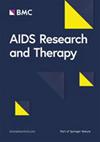加强艾滋病毒治疗和支持:对乌干达客户和医疗服务提供者对不同服务提供模式的看法进行定性调查
IF 2.1
4区 医学
Q3 INFECTIOUS DISEASES
引用次数: 0
摘要
艾滋病毒/艾滋病仍然是导致疾病和死亡的重要因素,尤其是在撒哈拉以南非洲地区。在这项研究中,我们进行了一项定性评估,以了解客户和医疗服务提供者对乌干达不同服务提供模式的看法。目的是确定服务提供模式的优缺点,为政策和决策提供信息,并促进针对具体情况的解决方案。在 2023 年 2 月至 4 月期间,我们利用定性横断面研究,有针对性地选择了一些人,包括艾滋病毒感染者 (PLHIV)、医疗保健工作者、艾滋病毒联络员、社区零售药剂师和各种利益相关者,收集他们的见解。数据收集过程包括在乌干达中部八个地区进行的 11 次深度访谈、9 次关键信息提供者访谈和 8 次焦点小组讨论。借助 Excel,通过归纳式专题分析对收集到的数据进行了分析。据报告,各种差异化服务提供模式(DSDMs),特别是社区-客户主导的药品分发模式(CCLAD)、社区药品分发点模式(CDDP)、社区零售药店药品分发点模式(CRPDDP)和基于设施的个人模式(FBIM),产生了若干积极影响。这些影响包括提高了治疗的依从性、抗逆转录病毒(ARV)供应的有效管理、减少了感染传染病的机会、提高了医护人员的待客热情、最大限度地减少了抗逆转录病毒疗法补药的旅行时间、减少了污名化以及减少了等待时间。有人担心,由于 DSDM 过度依赖捐助资金,在艾滋病毒状况披露、机会性感染治疗、坚持季节性预约和可持续性方面缺乏改善,这表明如果没有资金,可能会停止。人们对卫生工作者的承诺表示怀疑。值得注意的是,CCLAD 模式显示出了自我可持续性,客户在经济上支持小组成员取药。以社区为基础的 DSDM(如 CCLAD 和 CDDP)改善了抗逆转录病毒疗法补药的便利性、社会支持和客户体验。这些模式减少了旅行和等待时间,降低了感染风险。应对挑战并加强基于设施的模式至关重要。为了在捐赠资金结束后维持资金,可以采用交叉补贴等可持续性措施。如果实施得当,与 FBIM 模式相比,DSDM 有可能产生更好或相当的抗逆转录病毒疗法效果。本文章由计算机程序翻译,如有差异,请以英文原文为准。
Enhancing HIV treatment and support: a qualitative inquiry into client and healthcare provider perspectives on differential service delivery models in Uganda
HIV/AIDS continues to be a significant contributor to illness and death, particularly in sub-Saharan Africa. In this study, we conducted a qualitative assessment to understand Client and Healthcare Provider Perspectives on Differential Service Delivery Models in Uganda. The purpose was to establish strengths and weaknesses within the services delivery models, inform policy and decision-making, and to facilitate context specific solutions. Between February and April 2023, a qualitative cross-sectional study was utilised to gather insights from a targeted selection of individuals, including People Living with HIV (PLHIV), healthcare workers, HIV focal persons, community retail pharmacists, and various stakeholders. The data collection process included eleven in-depth interviews, nine key informant interviews, and eight focus group discussions carried out across eight districts in Central Uganda. The collected data was analyzed through inductive thematic analysis with the aid of Excel. The various Differentiated Service Delivery Models (DSDMs), notably Community-Client-Led Drug Distribution (CCLAD), Community Drug Distribution Point (CDDP), Community Retail Pharmacy Drug Distribution Point (CRPDDP), and the facility-based Facility Based Individual Model (FBIM), were reported to have several positive impacts. These included improved treatment adherence, efficient management of antiretroviral (ARV) supplies, reduced exposure to infectious diseases, enhanced healthcare worker hospitality, minimized travel time for ART refills, stigma reduction, and decreased waiting times. Concern was raised about the lack of improvement in HIV status disclosure, opportunistic infection treatment, adherence to seasonal appointments, and sustainability due to the overreliance of the DSDMs on donor funding, suggesting potential discontinuation without funding. Doubts about health workers’ commitment surfaced. Notably, the CCLAD model displayed self-sustainability, with clients financially supporting group members to collect medicines. Community-based DSDMs, such as CCLAD and CDDP, improve ART refill convenience, social support, and client experiences. These models reduce travel and waiting times, lowering infection risks. Addressing challenges and enhancing facility-based models is vital. In order to maintain funding after donor funding ends, sustainability measures like cross-subsidization can be used. If well implemented, the DSDMs have the potential to produce better or comparable ART outcomes compared to the FBIM model.
求助全文
通过发布文献求助,成功后即可免费获取论文全文。
去求助
来源期刊

AIDS Research and Therapy
INFECTIOUS DISEASES-
CiteScore
3.80
自引率
4.50%
发文量
51
审稿时长
16 weeks
期刊介绍:
AIDS Research and Therapy publishes articles on basic science, translational, clinical, social, epidemiological, behavioral and educational sciences articles focused on the treatment and prevention of HIV/AIDS, and the search for the cure. The Journal publishes articles on novel and developing treatment strategies for AIDS as well as on the outcomes of established treatment strategies. Original research articles on animal models that form an essential part of the AIDS treatment research are also considered
 求助内容:
求助内容: 应助结果提醒方式:
应助结果提醒方式:


